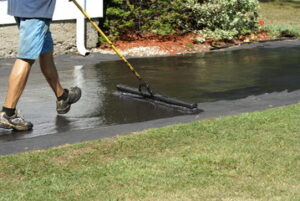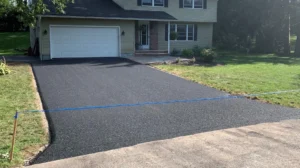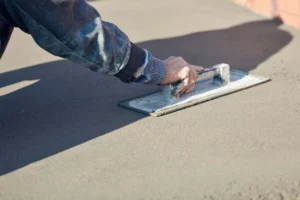Decorative concrete and concrete overlays are a growing segment of the residential market. Both are designed and manufactured to hold their custom carved or stamped shape, stick to walls and other surfaces without moving, sluffing, sliding, drooping, or running — and be sealed.
Famed architect Frank Lloyd Wright paved the way for reinforced concrete in modern architecture with his Unity Temple (built from 1905 to 1908) which features a Mayan-inspired decoration carved into the concrete. Click Here to learn more.

Sculpting concrete requires a variety of tools, each with its own purpose. Using the right tool for the job will help you achieve your desired design, whether you are creating a simple flower pot or an elaborate statue. A basic set of chisels is essential, as well as a variety of other tools designed for working with concrete.
You will also need a good quality concrete mix to work with. Kingdom Products Imperial Vertical Carving Mix is a lightweight and exceptionally strong concrete overlay that can be stamped, carved or molded into realistic stone, brick or block designs. It is available in thicknesses from feather edge to 2” and can be used for both indoor and outdoor applications.
There are three ways to create a sculpture from concrete: casting the concrete, carving it, and using wire mesh. Each has its positives and negatives, but the concrete carving method is becoming a popular choice for homeowners and business owners alike. It’s a great way to add a custom look to a backyard, pool deck, driveway or patio, and it’s easy to do with the right tools.
Once the concrete is mixed, it’s time to begin sculpting. It’s important to start with a clean surface, so be sure to wipe down the mold before starting to remove any excess cement from the surface. Chisels are the most common tool for sculpting concrete, and can be used in a variety of shapes to give your sculpture depth and character. The best chisels are made of high-quality steel and feature hardwood handles.
When it comes to carved concrete, the key is to work quickly so that the concrete doesn’t dry before you’re finished. It’s also a good idea to coat your hands in petroleum jelly before you begin to prevent the concrete from sticking to them.
Depending on the type of sculpture you’re making, you may need to use power tools as well as your hand chisels. Electric tools include saws, drills and grinders, while pneumatic tools are powered by compressed air and can include rotohammers and sanders. Regardless of the type of tool you’re using, it’s important to follow safety guidelines and read the instructions carefully before operating any machine.
Concrete can be sculpted to mimic stone and wood, but it takes more than just the right tools. A skilled craftsman needs to understand how the material behaves and what to expect as it sets up and hardens.
One way to learn the craft is to participate in a workshop taught by an experienced professional. Warren Ness, a rock sculptor and trainer, offers a two-day course that explores the techniques for making carved concrete projects. The workshop also covers how to design and plan a project, how to use the various carving methods, and how to make an overlay that enables the sculpting process.
The first step is to create a base or substrate to build the overlay on. Depending on the application, this may be a poured slab or an existing concrete surface that has been patched and primed. The substrate should be smooth, dry, and free of anti-adhesives to ensure a successful application of the concrete overlay.
If the existing concrete is very rough or pitted, an overlay with a textured skin can be used to mask the damaged area and provide a smoother finish that will accept a carved concrete pattern. In this case, it is recommended that the surface be smooth troweled and cured at least a week before the staining and engraving processes are started.
It is important to use a low-efflorescing carvable mix for the overlay. A pre-mixed product like Pro Wall Mix from works well. This is mixed with sand, cement and water on site to create a concrete specific to the project. It is also possible to use a regular thin-set tile mortar for the overlay, but it will be less suitable for the sculpting process.
The timing for starting the stamping or carving is critical to the success of the project. If the overlay is too wet it will sag or stick to the stamping or sculpting tools, and if it is too dry it will be difficult to work with.
A good gauge of the time to begin is when you can make a clean imprint with your finger without lifting it. This will give you an idea of the strength and flexibility of the overlay and when it is ready to be carved.
Concrete is a utilitarian construction material, used for sidewalks, driveways and other flatwork. But decorative concrete, which is applied to existing concrete structures, has become a growing business for contractors who specialize in transforming concrete into art. The technique involves a wide range of materials and systems that can be added either during the pouring process or after the concrete is cured, including acid staining, stamped overlays, polished concrete, carved concrete and stone-like overlays.
To make a good carved concrete surface, the installer must prepare the concrete well. He must ensure the mix design is appropriate for the intended use and that the concrete has a high enough slump to allow for proper carving. He must also place the forms properly, smooth and finish the concrete correctly. And he must be able to work quickly to avoid random show-through or weak pockets in the concrete.
Carving a concrete sidewalk can be a long, labor-intensive project. To do the job right, you need to line up a couple of reliable helpers and pick a day with a clear sky. If you’re ordering concrete from a ready-mix truck, be sure to choose one that will arrive early in the day. A wet, rainy pour will slow the process considerably.
If you’re pouring a large piece, such as a staircase, consider pouring it separately from the rest of the concrete. That way you can pour a stronger, more durable concrete that is specially formulated for steps. Adding a strengthening agent to the step concrete will also make it easier to chisel and carve.
Ness says there are several concrete mixes designed for vertical carved concrete. Those products usually have longer setting times and better carving qualities than standard commercial concrete, and are formulated with textural elements from sandstone to decayed wood in mind.
Joshua Russell, owner of specializes in concrete sculpting and water features, but he has also done projects that include carved concrete steps. He believes that the current market for these kinds of specialized concrete projects is largely commercial, but that the residential market could be coming into play in the near future as people become more interested in alternative materials like poured concrete.
Concrete can be sculpted in a variety of ways, from modeling to direct carving and casting. Direct carving leaves the cylinder, slab or block face of the material visible, an ordered sequence of contained forms and planes which give unity to the sculpture. Modeling is a different process, in which the sculpture is built up from a base of more permanent and rigid materials, such as clay, plaster, wax, concrete or synthetic resins.
Carving into the surface of a concrete sculpture can be done while it is still soft, using a variety of hand tools. When the concrete dries, it can also be carved using power tools. Some sculptors prefer to use both methods in turn, depending on the needs of a particular piece of work.
A newer technique, called wet carving, involves sculpting a soft mixture of sand and concrete by hand. It is poured into forms to make a planter or small sculpture, which must be carved before the concrete sets too hard. The advantage of wet carving is that it can be made with a minimum of equipment and doesn’t produce any dust.
Decorative concrete mixes are designed and manufactured to hold their shape when carved, and stick to walls or other surfaces without moving, sluffing, sliding, drooping or running. They often contain fine grades of sand, polymers and reinforced fibers, and offer long-setting times to allow the sculptor to work on the concrete for extended periods.
Russell, who has worked on a number of large-scale sculptural projects, including his own, describes his preferred method as the “overlay method.” Overlay concrete is applied to the surface and then textured to simulate a range of textures from sandstone to decayed wood. The resulting stone-like finish has the appearance of hand-laid stones but requires less labor and expense, eliminates the need for additional bracing and can be installed on walls over existing drywall or concrete.
Ness and Russell both say that a new generation of sculptors has helped fuel the rise of carved concrete, particularly vertical work. They attribute this to the availability of a wide range of specialized mixes designed for the vertical market that can be easily carved, and which have a high strength-to-weight ratio.



